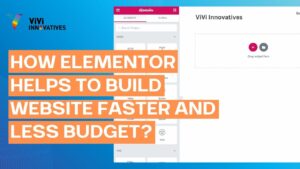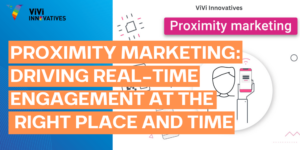Keeping advertising costs down while maximizing returns is a constant challenge for businesses, especially on a platform as competitive as Facebook. With over 2.9 billion monthly active users, optimizing your campaigns for lower cost per click (CPC) is essential to stretch your advertising budget further.
Achieving a low CPC on Facebook ads is worthwhile, as there is an average return on ad spend (ROAS) of 4:1. This article explores effective strategies to achieve that goal.
Analyze Your Current Facebook Ads Performance
Before exploring optimization tactics, you must first understand how your current campaigns are performing. Facebook’s Ads Manager provides a wealth of data for analyzing metrics like cost-per-click (CPC), click-through rate (CTR), and relevance score.
What’s CPC?
This metric measures the amount you pay when someone clicks on your Facebook ad. It’s a critical metric for assessing the cost-effectiveness of your advertising campaigns. Lowering your CPC can help you get more clicks for your budget, increasing the potential for conversions and ROI.
Facebook advertising CPC worldwide by industry (Source: Statista)
What’s CTR?
CTR represents the percentage of people who click on your ad after seeing it. It is calculated by dividing the number of clicks by the number of impressions (times the ad is shown) and then multiplying by 100 to get a percentage.
A higher CTR indicates that your ad is relevant and compelling to your audience, which can improve your ad’s overall performance and lower your CPC.
What’s the Relevance Score?
This metric ranges from 1 to 10 and indicates how well your ad resonates with your target audience. It is based on the positive and negative feedback expected from the audience viewing your ad.
A higher relevance score means your ad is more pertinent to your audience, which can lead to higher engagement rates, lower CPC, and better overall ad performance.
Understanding and optimizing these metrics are crucial for running successful Facebook ad campaigns and achieving a higher return on ad spend (ROAS).
That being said, identifying the ad sets and creatives with higher CPCs and lower engagement rates will help you pinpoint areas that need improvement.
To access your performance data:
Go to your Facebook Page. Click “Ad Center” in the left-hand menu. Find the ad you want to review and click “View results.” Choose the relevant metrics to track.
Once you have the data, look closely at the CPC for each ad set and ad creative and determine which ones you want to focus on.
Look for Audience Overlap
A huge problem with running Facebook ad campaigns is overlapping audience issues when you promote different ad sets to the same audience.
The larger the overlap, the worse your campaigns will perform and the higher CPC you will get competing with yourself. More alarming, the higher your Facebook Ad CPC, the more you will get competing with yourself.
Don’t waste your money fighting for the attention of the same audience: use the Facebook Audience Overlap tool to check if audiences overlap significantly—and, if they do, mutually exclude those audiences to avoid bidding against yourself.
Check for audience overlap with these steps:
From the Ads Manager, go to “Audiences.” Check the boxes next to the audiences you want to compare. Click “Actions” and choose “Show audience overlap.”
You can select up to five audiences to compare and see the percentage of overlapping users between these audiences.
In this example, there is a 62% audience overlap
Segment Your Audience Effectively
One of the most effective ways to lower your Facebook Ads CPC is by precisely targeting the right audience segments.
The theory here is simple: if you target a broad audience, they might click on your ad, costing you ad spend, but they are unlikely to convert, leading to higher CPCs.
By narrowing down your audience (or the people who actually see your ad), you not only reduce the number of clicks but also target people who are more likely to be interested in your offering.
To do this, Facebook offers powerful audience targeting options, such as:
Demographic targeting: Narrow down your audience based on factors like age, gender, location, and language. Incorporate geotargeting to further refine your reach based on specific geographic locations if you run an offline business. Interest-based targeting: Reach users based on their interests, behaviors, and online activities. For example, target users interested in health and wellness if you’re selling fitness products. Custom audiences: Create custom audiences based on your existing customer data, website visitors, or social media channel engagement. Lookalike audiences: Facebook generates new audiences that share characteristics similar to your existing customer base or website visitors (more on that later.)
By leveraging these targeting options, you’ll increase the relevance of your ads and reduce the likelihood of showing them to users who are unlikely to engage, ultimately lowering your CPC.
Optimize Ad Content for Higher Engagement
Engaging ad content is necessary to capture your audience’s attention and drive clicks. Facebook’s algorithm favors ads that perform well, so higher engagement rates will lead to lower CPCs and improved CTR.
Here are some tips for creating compelling ad content:
Use eye-catching visuals: Use high-quality images or video clips (AI tools can generate them in minutes) that are visually appealing and relevant to your product or service. Write compelling copy: Craft ad copy that speaks directly to your target audience’s needs, desires, and pain points, using persuasive language and a clear call to action. For example, instead of saying, “Buy our new coffee maker,” you might say, “Brew barista-quality coffee at home with our state-of-the-art coffee maker — on sale now!” Test different formats: Experiment with various ad formats, such as carousel ads, video ads, or collection ads, to find what resonates best with your audience. Leverage social proof: Incorporate social proof elements such as testimonials, reviews, or endorsements from satisfied customers. Social proof builds trust and credibility with potential customers by showing that others have had positive experiences with your product or service. For instance, include a quote from a customer review like, “This product changed my life!” along with their name and photo, if possible.
Remember to continuously test and refine your ad content to identify the most effective combinations of visuals, copy, and formats for your specific audience and objectives.
This ad nails the art of persuasive copy
Master Bidding Strategies to Reduce Costs
Facebook offers several bidding options that help optimize your ad spend and lower your CPC. Understanding these strategies and choosing the right one for your campaign objectives is fundamental to a high-performing, low-cost Facebook ads campaign.
Lowest cost bidding: Designed to deliver your ads at the lowest possible cost per optimization event (e.g., clicks, impressions, or conversions). Ideal for campaigns focused on driving traffic or increasing brand awareness. Target cost bidding: Set a target cost per optimization event, and Facebook’s algorithm will adjust your bids to try to achieve that target. It works well for campaigns with specific cost goals. Highest value bidding: It delivers your ads to the users most likely to take your desired action, such as making a purchase or signing up for a service. It is suitable for campaigns focused on driving conversions. Manual bidding: Set manual bid amounts for each ad set, allowing for more control over your bids. It requires close monitoring and adjustment based on performance data.
Experiment with different bidding strategies and monitor their impact on your CPC and overall campaign performance to find the best fit for your goals and budget.
Use Automated Bidding Tools
Facebook’s automated bidding tools leverage machine learning algorithms to analyze your campaign data and adjust bids in real time based on performance. These tools streamline your bidding process and optimize your campaigns for lower CPCs by:
Improving efficiency by automatically adjusting bids based on your campaign objectives and performance data. Enabling real-time optimization by responding quickly to changes in the auction landscape, ensuring your bids remain competitive and cost-effective. Leveraging machine learning algorithms to identify and capitalize on opportunities for better results and lower CPCs.
To set up automated bidding, navigate to the campaign or ad set level in the Facebook Ads Manager, select the appropriate bid strategy (e.g., lowest cost, target cost, or highest value), set your desired bid amount or target cost per optimization event, and enable automated bid adjustments.
Remember to monitor your campaigns closely and adjust your settings to ensure the automated bidding tools deliver the desired results.
Explore Meta’s Bid Strategy Guide for insights on selecting the ideal bidding approach.
Balancing cost and control when setting up Facebook ads (Source: Meta)
Leverage A/B Testing to Fine-Tune Ad Campaigns
A/B testing, also known as split testing, is a powerful technique for optimizing your Facebook Ads and lowering your CPC. By testing different variations of your ad elements, such as visuals, copy, targeting, or bid strategies, you can identify the most effective combinations for your audience and objectives.
To set up effective A/B tests, follow these steps:
Define your test hypothesis: Clearly define what you want to test and the expected outcome, e.g., “Using a different ad copy will increase the click-through rate and lower the CPC.” Create variations: Create two or more variations of the element you want to test. For example, if you’re testing ad copy, create two different versions of the text. Set up the test: In the Facebook Ads Manager, create separate ad sets for each variation, ensuring all other elements (e.g., targeting, budget, and schedule) are identical across the ad sets. Run the test: Let the test run for a period that allows you to collect enough data to make a reliable decision. This means you need to gather a large enough sample size to ensure the results are not due to chance. Typically, this involves running the test for at least a week, but the exact duration can vary depending on your traffic and the specific metrics you are measuring. Analyze the results: Once the test has run its course, analyze the performance data for each variation, paying close attention to the CPC and other relevant metrics. Implement findings: Based on the test results, implement the winning variation(s) and continue testing to find further optimization opportunities.
A/B testing should be an ongoing process, as ad performance will change over time due to factors like audience fatigue, market shifts, or algorithm updates. Continuously test and refine your ad elements to ensure you deliver the most effective campaigns at the lowest possible CPC.
Go for Advanced Targeting Techniques
While basic demographic targeting can be effective, leveraging Facebook’s advanced targeting options will help you reach even more relevant audiences, potentially lowering your CPC.
Apart from the demographic targeting mentioned earlier, additional targeting options include the following:
Behavior-based targeting: Reach users based on their past purchase behavior, device usage, or travel preferences, making your ads more relevant and valuable to them. Connection-based targeting: Target users based on their connections to your Facebook page, app, or event, ensuring your ads reach those already familiar with your brand. Life event targeting: Reach users during specific life events, such as moving, getting married, or starting a new job, when they may be more receptive to certain products or services.
While mastering the finer points of advanced targeting will be a learning curve, leveraging these options to their full potential will certainly help you achieve highly targeted and cost-effective campaigns.
This ad could be targeted towards individuals who have indicated “travel” as a life event on Facebook
Explore Lookalike Audiences and Retargeting
In addition to advanced targeting options, Facebook offers powerful tools for reaching similar audiences and retargeting users who have already shown interest in your brand.
Lookalike Audiences
Facebook’s Lookalike Audiences feature allows you to target users who share similar characteristics with your existing customer base or website visitors. By leveraging data from your custom audiences, Facebook identifies and reaches new users likely to be interested in your products or services.
To create a Lookalike Audience:
Go to the “Audiences” section in the Facebook Ads Manager Select “Create Audience” and choose “Lookalike audience” Select the source audience (e.g., customer list, website visitors) you want to create a lookalike from Adjust the audience size and location settings based on your preferences. Select “Create Audience.”
Creating a lookalike audience for Facebook ads
Retargeting
Retargeting, also known as remarketing, allows you to target users who have previously interacted with your brand, such as visiting your website or engaging with your social media content. These users are already familiar with your offerings and are more likely to convert, making retargeting a cost-effective strategy for lowering your CPC.
To set up a retargeting campaign on Facebook:
Install the Facebook Pixel on your website to track user behavior and interactions. Develop ad creatives and messaging tailored to the specific stage of the customer journey your retargeting audience is in. In the Facebook Ads Manager, create a custom audience based on specific website events (e.g., viewing a product page, adding to cart, or initiating checkout). Create a new campaign or ad set targeting this custom audience.
By targeting users who have already shown interest in your brand, you will increase the relevance of your ads and improve your chances of conversion, ultimately leading to a lower CPC.
For example, for creators that use live streaming, you can create custom audiences based on viewers who have watched your live sessions and then retarget these users with ads promoting your upcoming classes or special offers.
If you sell online with Ecwid, you can install the Facebook pixel on your Ecwid store for free. Just follow the instructions in our Help Center.
This ad is aimed at individuals who have previously shown interest in these specific products
Wrap Up
Optimizing your Facebook Ads CPC is an ongoing process that requires strategic planning, data analysis, and continuous experimentation. Implementing the strategies outlined in this article can significantly reduce your advertising costs and improve your overall campaign performance.
Remember to consistently monitor your campaigns, test new approaches, and stay up-to-date with the latest Facebook advertising best practices and updates. With dedication and a data-driven approach, a lower CPC is attainable, which will, in turn, maximize your return on investment from Facebook advertising.
If you want to further improve your Facebook ads, consider migrating your online store to Ecwid (or creating a new one). Ecwid users can easily connect their product catalogs to Facebook and start advertising their products on Facebook.
You’ll be able to:
Create ads featuring your products in different styles automatically Reach your ideal customers by using detailed targeting options, retargeting, and lookalike audiences Install the Facebook pixel on your Ecwid store to boost your ad performance.
So don’t wait any longer — sign up for Ecwid and start leveraging Facebook ads for your business.
How to Advertise a Business on Facebook for Beginners What Is Facebook Pixel and How to Use It? 5 Ways To Lower Your Facebook Ads CPC A Foolproof Way to Make Your Facebook Ads More Effective 7 Steps to the Best Ads for Facebook and Google Campaigns
The post 8 Ways To Lower Your Facebook Ads CPC first appeared on Ecwid | E-Commerce Shopping Cart.





